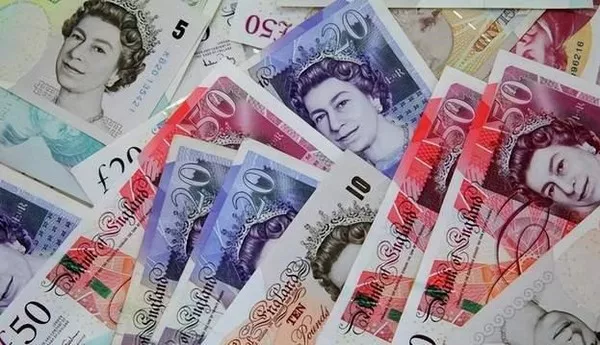The foreign exchange market, a dynamic arena where currencies are traded around the clock, has been buzzing with activity, and one question that consistently echoes through the financial corridors is: “Why is the pound so weak against the dollar?” This question is particularly relevant in recent times as the British pound, often referred to as sterling, has faced notable challenges when pitted against the US dollar. To understand the intricacies of this issue, we must delve into the multifaceted factors contributing to the pound’s weakness and explore the implications for global finance, trade, and the United Kingdom’s economy.
Historical Context: A Glimpse into the Past
Before delving into the contemporary factors influencing the pound’s weakness against the dollar, it’s crucial to consider the historical context. Historically, the pound sterling has been one of the world’s dominant reserve currencies, boasting stability and influence on the global stage. However, since the turn of the 21st century, the pound has been on a rollercoaster ride. The question of “why is the pound so weak against the dollar” has its roots in historical events such as the 2008 financial crisis, which severely impacted the UK’s economy and led to a prolonged period of economic uncertainty.
Brexit’s Lingering Impact
One of the most significant contemporary factors contributing to the pound’s weakness against the dollar is undoubtedly Brexit. The tumultuous process of the United Kingdom’s departure from the European Union, finalized in January 2020, has had far-reaching consequences. The uncertainty surrounding the trade deal negotiations, coupled with the economic disruption caused by the COVID-19 pandemic, has left investors and businesses alike asking, “Why is the pound so weak against the dollar?”
Brexit-induced uncertainty has made investors cautious, leading to capital outflows from the UK. The lack of a clear trade framework and the potential for trade barriers with the EU have increased market volatility, causing the pound to fluctuate significantly against the dollar. Investors are wary of the potential economic disruptions that may arise in the post-Brexit era, which has contributed to the pound’s ongoing weakness.
Monetary Policy Divergence
Another key factor in understanding why the pound is weak against the dollar is the divergence in monetary policies pursued by the Bank of England (BoE) and the Federal Reserve (Fed). While the Fed has maintained a dovish stance, keeping interest rates low and implementing quantitative easing programs to stimulate economic recovery, the BoE has been more cautious in its approach. The difference in interest rate policies has led to a significant yield gap between US and UK assets, making US investments more attractive to global investors.
As a result, investors seeking higher yields have favored the US dollar over the pound, driving up demand for the former. This divergence in monetary policies has been a crucial factor in the pound’s persistent weakness against the dollar.
Economic Headwinds and Inflation Concerns
Economic factors are also at the forefront when we ask, “Why is the pound so weak against the dollar?” The UK economy has faced headwinds, including sluggish growth, rising inflation, and supply chain disruptions. The uncertainty caused by the pandemic and Brexit has hindered the UK’s economic recovery, leading to reduced investor confidence.
In addition to these challenges, inflation concerns have weighed on the pound. Rising prices erode the purchasing power of a currency, and with inflationary pressures persisting in the UK, investors have grown cautious about holding pounds. This has further contributed to the pound’s weakness against the dollar, as the US has also experienced inflation but has taken a more aggressive stance in addressing it through tighter monetary policy.
Implications for the UK and Global Economy
The persistent weakness of the pound against the dollar carries significant implications for both the United Kingdom and the global economy. From a domestic perspective, a weak pound can impact consumers by increasing the cost of imported goods, potentially leading to higher inflation. It can also affect businesses that rely on imports and increase the cost of foreign travel for UK residents.
For the UK’s trade balance, a weak pound can be a double-edged sword. While it may boost exports by making British goods more competitive on the global market, it also increases the cost of imported components and raw materials, potentially harming industries that rely on foreign inputs.
On the global stage, a weak pound can affect international trade and investment. It can make the UK an attractive destination for foreign investors looking to acquire British assets at a discount. However, it can also reduce the purchasing power of UK consumers and affect the global competitiveness of British companies.
Conclusion
In the world of currency exchange, the question of “why is the pound so weak against the dollar” is multifaceted, with various factors at play. From historical events like Brexit to divergent monetary policies and economic challenges, the pound has faced headwinds that have eroded its strength relative to the US dollar. Geopolitical factors, market sentiment, and speculation also contribute to the pound’s weakness.
The implications of a weak pound are wide-reaching, impacting consumers, businesses, and the broader economy in the United Kingdom and beyond. As global economic dynamics continue to evolve, the exchange rate between the pound and the dollar will remain a topic of interest for economists, investors, and policymakers alike.
Understanding the underlying factors driving the pound’s weakness is essential for navigating the complex terrain of international finance.
Related Topics:
Who is on the 2 Dollar Bill: A Comprehensive Overview
Unlocking the Mystique: Gold Presidential Dollar Coins
Can I Get One Dollar Coins at the Bank: Things You Need to Know


























